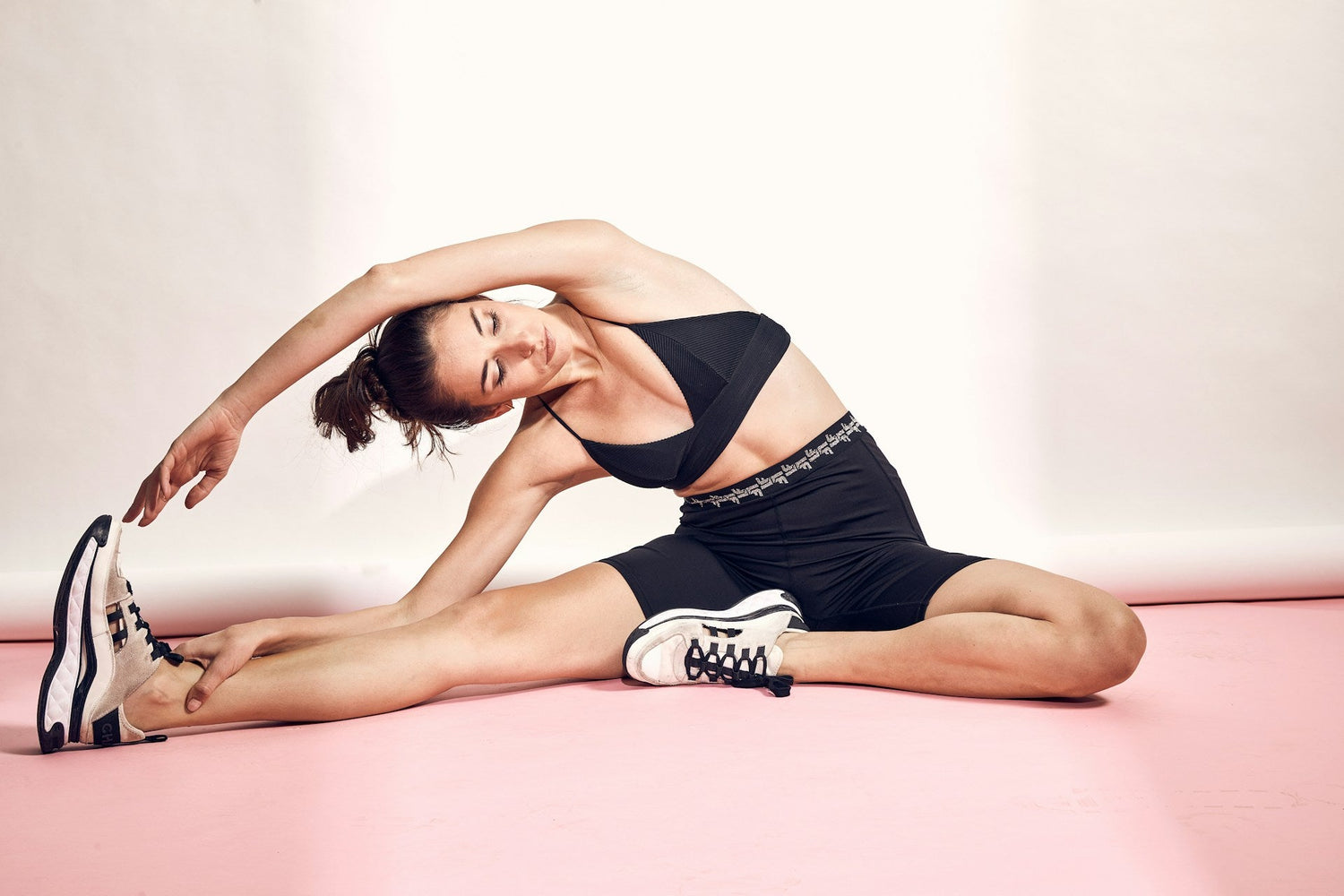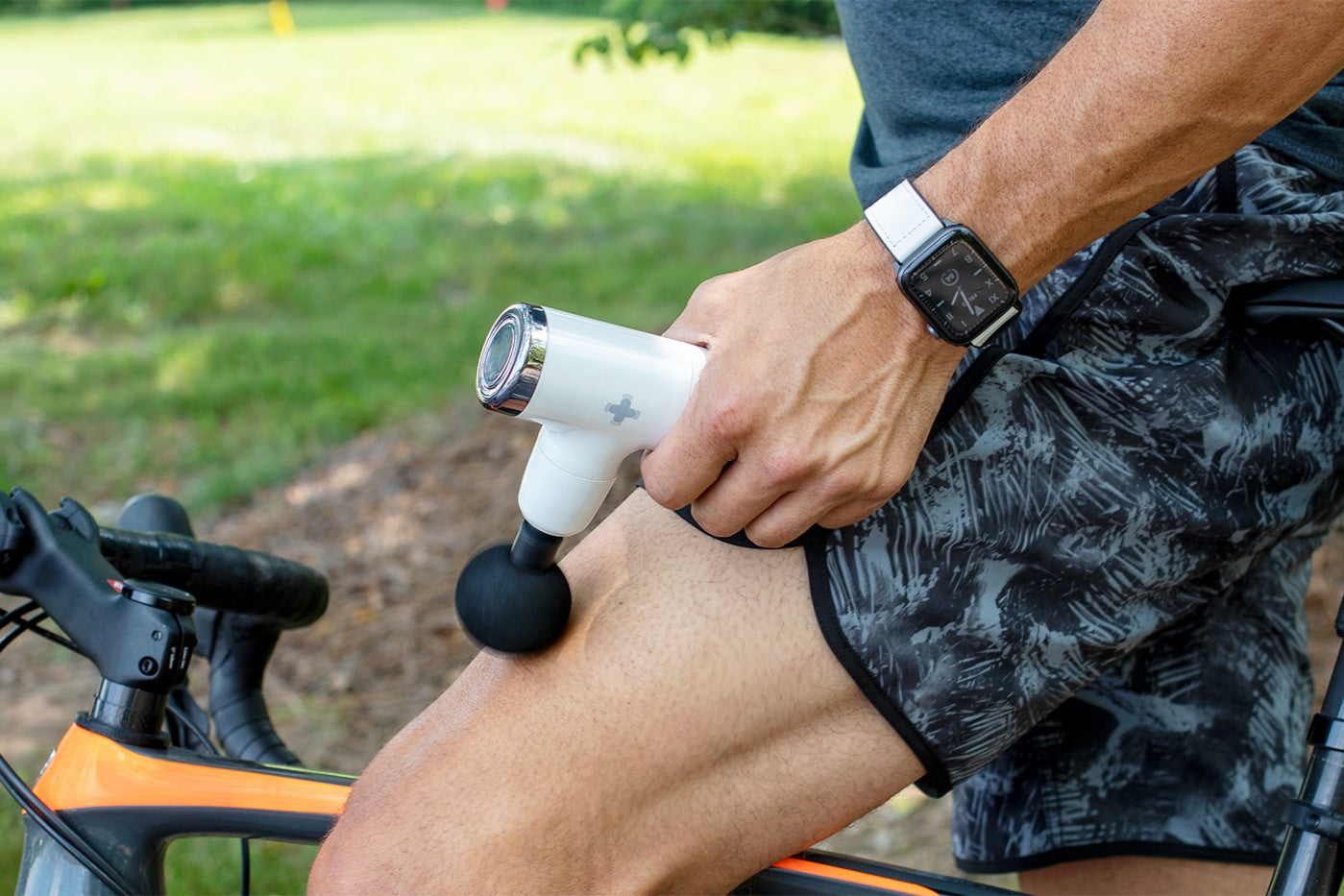Working out in the pursuit of bigger muscles, better cardio, and a fitter body is a rewarding journey. But whether you’re a beginner or a seasoned gym expert, the soreness that comes with it can be killer. If your routine has been leaving you achy lately, you might wonder: Are there any tricks for how to relieve sore muscles after a workout?
Below, learn about what causes post-workout soreness, as well as five of the best remedies to soothe your muscles and boost your recovery.
What Causes Post-Workout Soreness?
If you’re a regular gym-goer, you might get sore from time to time. And if you’re just starting a fitness journey, you might be extremely sore after your first few sessions. But why does this happen?
Certain physical activities that challenge your muscles to work harder than usual can lead to soreness. This is especially true when you do eccentric movements or something outside your norm. For example, your first-ever lifting session might cause a lot more soreness than that same session will after a year or two of training.
When you do challenging exercises, your muscle fibers develop microtears, which can then lead to inflammation. Many experts believe this inflammation and damage are behind that familiar post-workout soreness known as delayed onset muscle soreness (DOMS).
This stiff, painful condition usually occurs 12 to 24 hours after exercise and can last for up to a few days.
How to Relieve Sore Muscles After a Workout
DOMS can be bothersome, but the good news is that there are ways to make your next few days a little less painful.
Here are five powerful remedies to try today:
1. Heat and Cold Therapy
Heat and cold therapy are two reliable ways to alleviate muscle soreness. Heat can help you loosen up stiff muscles, while an ice pack can help you calm down inflammation. If you have very specific areas of soreness, simply apply a heat pack or cold pack to whichever muscles are bothering you most for a few minutes at a time.
For whole-body heat or cold therapy after your workout, you can:
- Wrap yourself in a heated blanket
- Take a warm bath
- Use a sauna
- Jump into an ice bath
- Take a cold shower
2. Try a Foam Roller
Foam rollers allow you to do self-myofascial release, a type of massage that loosens and relaxes the connective tissue around your muscles. If you have one on hand, you can gently massage, roll, and stretch the main muscle groups you used during a workout.
One 2015 study showed that foam rolling was an effective way to help athletes reduce muscle pain after exercise, as well as improve aspects of their performance.
3. Active Recovery
It might sound counterintuitive, but yes — after putting your muscles through an intense gym session, more movement might be the key to feeling better. Active recovery is one form of movement that can help you recuperate faster and reduce muscle pain after a workout.
It involves any restorative, light activity that you can do after more strenuous exercise. Some options to try include:
- Yoga
- Tai chi
- Walking
- Light hiking
- Swimming
The benefits include reducing lactic acid buildup, boosting circulation, and keeping your body flexible and loose — all of which can help ease that post-workout soreness.
4. Use a Massage Gun
If you’ve been curious about how to ease sore muscles after a workout, massage guns are an excellent option. These tools use a rapid-pummeling technique known as percussion therapy, which boosts blood flow and stimulates muscle tissue.
If you have access to a massage gun like this one, you can simply turn it on and glide it over your muscles for a few minutes after your workout. By using it directly after exercise, you could see a significant difference in your aches and pains.
In one review from Frontiers in Physiology, researchers looked at various methods that athletes commonly use to boost their recovery. Of several strategies ranging from active recovery to cryotherapy, they found that massage was the most powerful tool for soreness and fatigue.
5. Sleep Well
Feeling sore after a workout happens when your muscles are overstressed and have suffered microscopic damage. And when it comes to DOMS, sleep is one of your best tools for healing.
Focus on getting at least 7 to 9 hours of sleep per night as your body works to recover. And if you have the urge to take a nap, don’t hesitate to do so. Even a short snooze may help you feel better.
How to Prevent Muscle Soreness After Workout
Once your muscles are sore after a workout, the bad news is that you’ll have to let the healing process run its course for a few days. This is why prevention is key.
With this in mind, here are some prevention tips to remember the next time you jump into a workout:
- Focus on a healthy warm-up. One small study showed that a warm-up before a new type of exercise helped with DOMS, but a cool-down did not. So, make it a point to do some light stretches or cardio before diving into your more intense exercises.
- Use a massage tool or foam roller shortly after your workout. Many people report that massage after a workout helps them feel less sore while keeping their bodies loose and relaxed.
- Don’t push yourself too far. Progressive overload and challenging yourself are important in the gym, but you don’t want to do so much that you’re stuck in bed for days after your session.
The Bottom Line
Figuring out how to relieve sore muscles after a workout can be frustrating. Fortunately, you can start to feel better by trying active recovery, foam rolling, using a massage gun, heat or cold therapy, and getting plenty of sleep.
These remedies can help you make the soreness a little more bearable. Not only that, but many of them can promote healthy healing and help you speed things along.
To boost your recovery and hit every workout feeling your best, check out the MedMassager Accuvibe Mini and Accuvibe Micro massage guns today.


